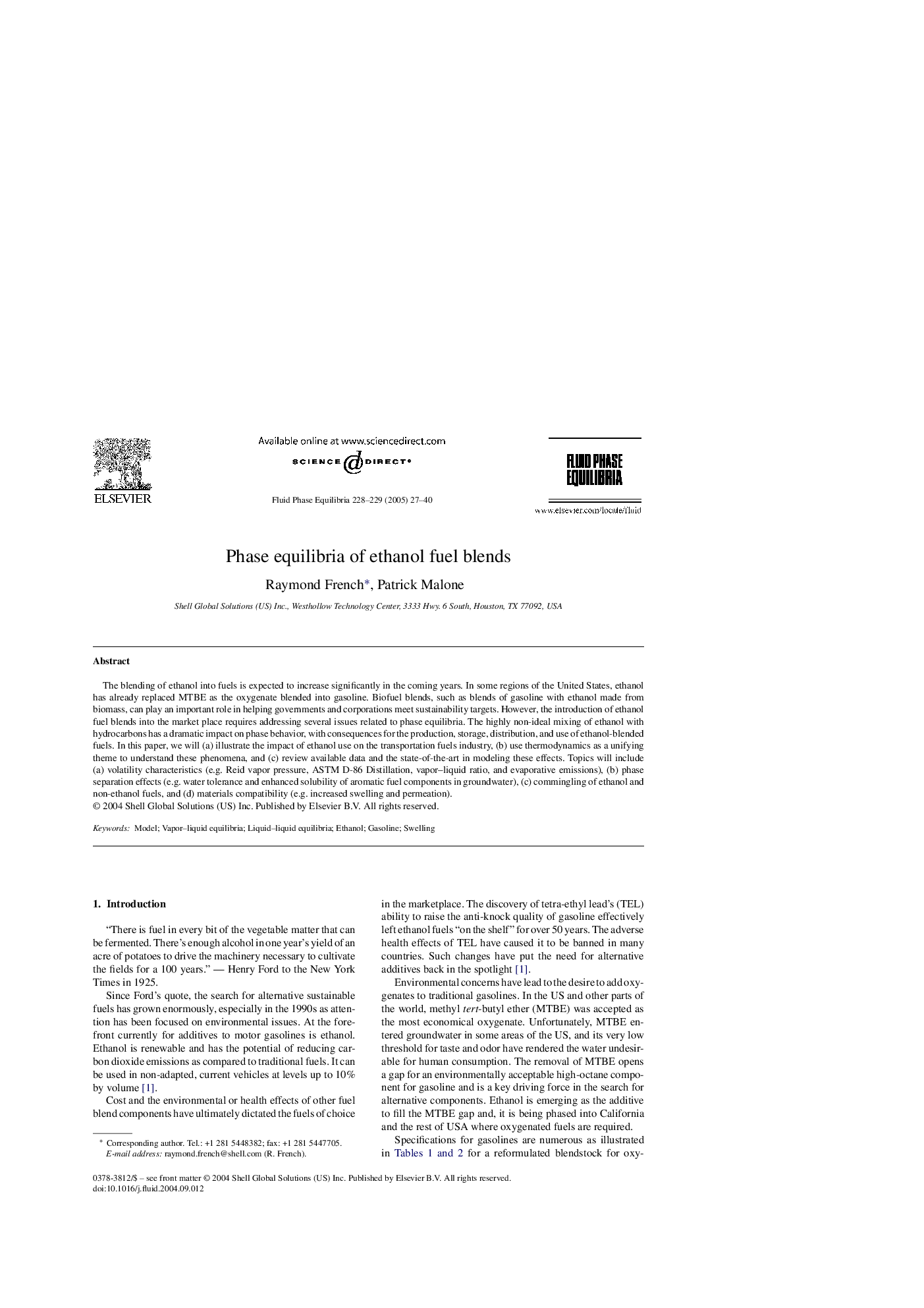| Article ID | Journal | Published Year | Pages | File Type |
|---|---|---|---|---|
| 9626041 | Fluid Phase Equilibria | 2005 | 14 Pages |
Abstract
The blending of ethanol into fuels is expected to increase significantly in the coming years. In some regions of the United States, ethanol has already replaced MTBE as the oxygenate blended into gasoline. Biofuel blends, such as blends of gasoline with ethanol made from biomass, can play an important role in helping governments and corporations meet sustainability targets. However, the introduction of ethanol fuel blends into the market place requires addressing several issues related to phase equilibria. The highly non-ideal mixing of ethanol with hydrocarbons has a dramatic impact on phase behavior, with consequences for the production, storage, distribution, and use of ethanol-blended fuels. In this paper, we will (a) illustrate the impact of ethanol use on the transportation fuels industry, (b) use thermodynamics as a unifying theme to understand these phenomena, and (c) review available data and the state-of-the-art in modeling these effects. Topics will include (a) volatility characteristics (e.g. Reid vapor pressure, ASTM D-86 Distillation, vapor-liquid ratio, and evaporative emissions), (b) phase separation effects (e.g. water tolerance and enhanced solubility of aromatic fuel components in groundwater), (c) commingling of ethanol and non-ethanol fuels, and (d) materials compatibility (e.g. increased swelling and permeation).
Related Topics
Physical Sciences and Engineering
Chemical Engineering
Chemical Engineering (General)
Authors
Raymond French, Patrick Malone,
